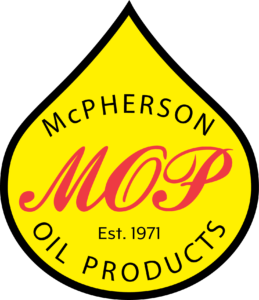Fleet Maintenance Tip: Don’t Forget About Chassis Lubrication
06 Apr 2020, Posted by in Oil TipsNo matter if they work for a mine, a trucking fleet, or a construction company, when a fleet maintenance team looks at keeping their trucks properly lubricated, the first few things they typically consider are the engine and the transmission because of how important they are to the truck’s functionality.
While those are obviously important, it’s also critical to examine the lubrication of other critical components such as the chassis. In fact, the chassis has a direct impact on truck reliability, uptime, and as a result, overall productivity. If not properly maintained, trucks can have issues with steering or suspension – and the last thing any fleet maintenance manager wants to deal with is a break down somewhere far away from the shop or on a job site in the middle of the day.
So, this article will take a closer look at chassis lubrication basics and share some tips to keep those wheels turning.
The typical suspension
The typical commercial vehicle suspension is an arrangement of springs and linkages that connect the wheels to the frame and enables steering. There are two suspensions on a vehicle, one in the front (Figure 1) and another in the rear (Figure 2), and they are both of different designs.

Front suspensions are typically independent, meaning the wheels move separately of each other, while in the rear suspension, the axles are usually solid. An exception to this is in front-wheel drive vehicles, where all four wheels tend to move on independent axles.
In the front suspension, lubrication is needed for the ball joints, control arm bushings and tie-rod ends. The lubricant can be applied with a grease gun or by hand, with regreasing occurring at regular intervals, typically twice a year.
One item worthy of discussion is the front wheel bearings. These are enclosed and enable the wheel to rotate on the spindle. The front wheel bearings are anti-friction angular contact and designed to carry thrust and radial loads. Front-wheel bearings are designed for grease lubrication and are considered “packed for life.” In most cases, these bearings are changed and regreased as the brakes rotors are replaced.

Rear suspensions, on the other hand, are typically simpler than front suspensions in that there is no requirement for steering. As you can see, they contain springs, coils and control arms that are largely designed to keep the axle in place.
Rear axles often contain bushings that require periodic greasing, on the same regreasing interval as the front suspension. One major difference is the wheel bearings for rear-wheel-drive units. These bearings are usually connected by an axle to the rear differential and are lubricated by the oil contained in that differential, so they do not require external grease lubrication.
Chassis lubricants
Most suspensions linkages and pivot points are lubricated with grease. Chassis components are exposed to the elements, including dust, water and extreme temperatures, so lubricants need to provide adequate protection.
In general, the lubricating grease should provide:
- Wear protection
- Oxidation stability
- Corrosion protection
- Resistance to water washout
Most formulations are lithium-based or NLGI (National Lubrication Grease Institute) No. 2 based, and they also typically contain a base oil in the viscosity range ISO 150 to 220 along with the desired additives.
Chassis greases are NLGI certified for GC-LB as defined by ASTM (American Society for Testing and Materials) D 4950. G-level greases are used for wheel bearings and come in three categories: GA, GB, and GC, with GC being the highest grade.
For chassis lubrication, L-level greases come in two categories: LA and LB, with LB being the higher performing category. Mobil greases meeting these specifications include Mobil Delvac Extreme Grease and Mobil Centaur Moly.
That said, there are some applications that require lubricating oil in chassis suspensions, typically the wheel bearing on the drive axial. Lubricants used to protect these applications typically include gear lubricants API GL-4 or GL-5 and in larger off-road vehicles, Caterpillar TO-4 and Allison C-4 fluids. Mobil fluids used in differential wheel bearing applications include Mobilube HD Series, Mobiltrans HD series and Mobilfluid 424.
In short, if you’re involved with maintaining an on-highway or off-highway fleet, remember – don’t forget about the chassis!
– By Rick Russo; Lube Talk for ExxonMobil
About: McPherson Oil has provided the southeast with quality products and services since 1971. As a proud distributor of ExxonMobil products, we offer these services through our belief in TPM – Total Petroleum Management. Through our TPM program, McPherson brings a valued-added difference to its customers by meeting all of their petroleum needs. Our commitment to our customers is reflected in our company vision and mission statements. McPherson proudly services Alabama, Arkansas, North and Central Georgia, Mississippi coast, Florida panhandle, Greater Chattanooga Area, the Greater New Orleans Area and Louisiana and Mississippi Gulf Coast. McPherson Oil is an authorized ExxonMobil distributor.
